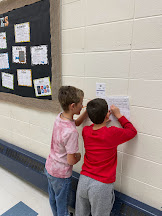Friday, November 25
Blog # 4
November 21-25
Thank you to everyone that took the time to meet with me during Parent Conferences. It is always a pleasure to connect with parents and to share student successes.
Please feel free to reach out at any point during the year to chat.😃
Grade Three Helpful Link
Our decodable texts can be found at ...
https://flyleafpublishing.com/
Watch next week for a post on High Frequency Words and the "First 300" for grade three.
Grade Three, Four, Five and Six
Summaries
Learning Objective: I can summarize the connections among ideas, events, settings and characters in text.
Over the past weeks we have been working on summarizing or retelling fiction stories and novels. Summarizing is a skill that can be achieved in a variety of ways orally and visually. Students in each grade will be provided with a number of methods to record their learnings. Then as a next step, based on information required or the task at hand they will determine the best method to share their ideas.
In grade three, we are having conversations about the 5 W Questions (who, what, where, why and how) at the bottom of each page in a text. The grade fours are using a "Four Door" page to list important facts on the front and then a written summary inside. In grade five, students are working on using a template and rubric to record their summaries after reading a series of chapters.
The students in grade six are taking the "One Page" approach, where they use one page to artistically represent the theme and connections between ideas, events, settings and characters of the chosen novel.
In the following weeks, we will summarize passages with "Ten Finger or Twenty Finger Summaries". Where one student or a small group choose 10 or 20 words to describe the text. This encourages students to create a concise and clear summary that only includes the main points of the text.












